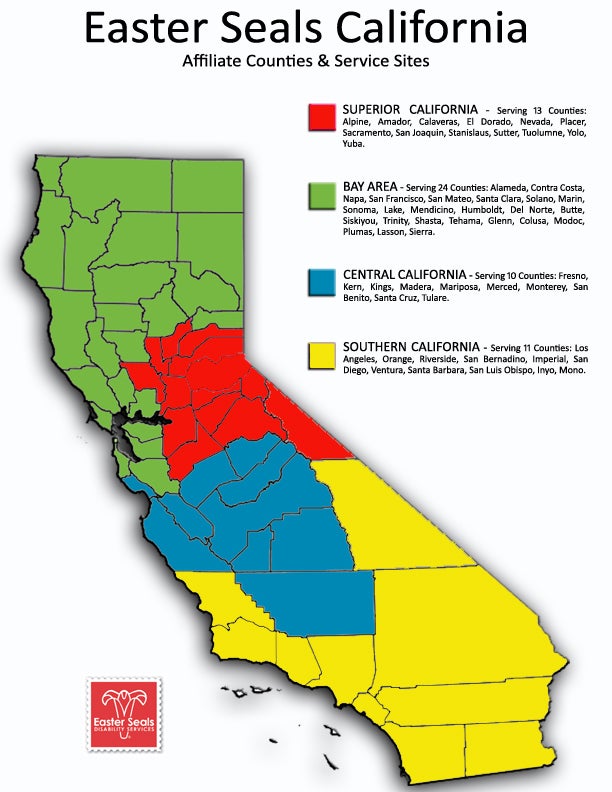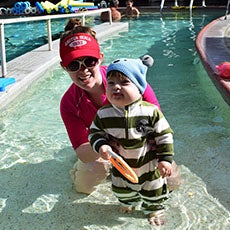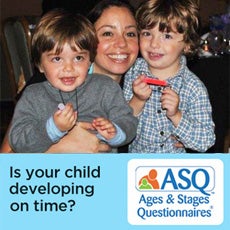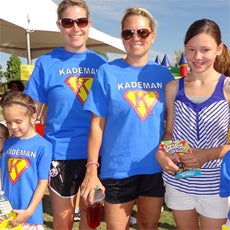
Learn About Us
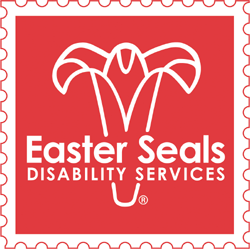
Easter Seals Superior California
Established in 1992, improved efficiency and high quality client services were the primary motivating factors for merging the Easter Seals of Sacramento, Stockton and Yuba into one agency, Easter Seals Superior California. From the moment the merger was consummated; the consolidated administrative functions translated into reduced expenses and instantly released more resources to address client needs. Furthermore, donated resources were maximized to their full potential, and ultimately, more funds were diverted to client services. The common denominators throughout our history are Rotary involvement, dedicated volunteer service, commitment to the Easter Seals mission, influential staff, delivery of quality services, and a belief that all people with disabilities will have equal opportunity to live, learn, work and play in their communities.
Stockton Easter Seals - The First California Affiliate
Our statewide Easter Seal movement was born in 1926 at the annual Rotary Club Convention where the California Society for Crippled Children was established.
The 1926 Convention was notable for another reason as Rotarians fashioned a proposal for state legislative action in which the state would guarantee that no crippled child would be denied medical care because of financial problems. The proposal eventually evolved into the Crippled Children Services Act.
In compliance with their mission, the California Society began conducting clinics in various areas addressing the multiple needs of people with disabilities. The first clinic opened November 1926, in San Joaquin County and instantly achieved great success and community support. As a direct result of this success, the clinic was reorganized on November 14, 1927 and became the first Local Society in California, the San Joaquin Society for Crippled Children.
Dr. John Sippy was the Society's first president. His presence inspired a legacy of volunteer service which attracted notable community leaders to our cause: Dr. John Dameron, Ralph Carter, William Montgomery, John Lilly, Dr. Elmer Bingham, John Hobin, Rolla Garretson, Norman W. Shaw, Jr., Dr. John Blinn, Raymond Wells, Henry Jopp, Lenore Shaw, Dr. John Lanfranki and Michael Smith.
Area Programs: A Legacy of Foresight and Service
From 1927 to 1951, service was delivered as needed and commensurate with the Society's available resources.
In 1951, the Society joined an alliance with a separate agency known as the National Foundation and opened the San Joaquin Rehabilitation Center. The Center was a pioneering effort, as few such Centers existed. The Center provided therapy for post-polio survivors as well as care for people with other disabilities. By 1962, the Centers services diversified allowing care for those with Bell's Palsy, cerebral vascular accident, muscular dystrophy, and amputees. The foresight of Society leaders was validated when, in 1961, St. Joseph's Hospital added an on-site rehabilitation unit. A year later, the Rehabilitation Center closed as people with disabilities were served at the hospital and Society resources were diverted toward other projects.
In 1952, the Society approved funding for sixteen children to Easter Seal Camp. Over 700 children have followed these original sixteen in the ensuing summers.
Staff Helps Propel Our Cause
From 1958 to 1962, Dorothy Inglis volunteered as the Society's first Executive Director. Her volunteer service lasted four years, and she helped initiate the San Joaquin Rehabilitation Center project.
The next Executive Director, Marit Wenztel Smith, was the first paid staff executive. She introduced Speech Therapy, the Information/Referral Service, and directed the existing program. The Society's annual revenue of $22,000 funded service for over 600 clients.
By the time Athena Moran became the Society's Executive Director two important new programs emerged as community priorities: the Architectural Barrier-Free Advocacy Plan, and the Stroke Program.
The Society's aggressive support of the Architectural Barrier-Free Advocacy Plan and accessibility issues resulted in several innovations and activities: the Society published two books defining specifications for architects, contractors and building inspectors; conducted a seminar for 300 state employees; convinced the Department of Motor Vehicles to increase driver awareness of the disabled logo by addressing it's importance in the Drivers Handbook; designed a "Travel Card" for drivers with disabilities which later evolved into the disabled dashboard placard.
By 1977, the Society income surpassed the $100,000 mark while serving over 2,300.
The Stockton Therapeutic Center
In the late 1970's the Board discussions focused on constructing a permanent Therapeutic Center replacing the old, temporary and dilapidated quarters. Athena Moran accepted the challenge and spearheaded a Capital Fund Drive. Land was secured from the City of Stockton and fund raising
efforts began to pay off. On October 24, 1981, a Ground Breaking Ceremony was conducted, and nineteen months later, on May 23, 1983, the Easter Seal Therapeutic Center officially opened.
In the first full year of operation, the Center served just short of 1,600 clients in a variety of services including Speech, Physical and Occupational Therapy, Personal and Family Counseling, Warm Water Therapy, Information/Referral Services, Easter Seal Camp, Independent Living Skills Program and Basic Computer Training.
The Stockton Society's contribution to the new Superior Society is a Tradition of volunteer activism and advocacy on behalf of clients. With over 70 years of service, the Society is deeply rooted in the community's identify. California's oldest Society is a permanent fixture in Stockton and will continue to be a leader in advocating, supporting and serving people with disabilities.
Sacramento Easter Seals
In 1922 Dr. Gustave Wilson and the Sacramento Rotarians gained state wide notoriety for helping crippled children. They never could have envisioned that their efforts would lead to a state wide Rotary initiative, legislation to establish the Crippled Children’s Services Act and The California Crippled Children’s Society. The first name, among several throughout our Sacramento history, was the Junior Rehabilitation Society of America, incorporated September 25, 1934. By 1935, the name was changed to Sacramento County Society for Crippled Children.
As it was known until 1992, the Sacramento County Easter Seals owes it beginnings to the compassion of Rotarians Dr. Wilson and Ernest Chappell.
Founding Fathers Harry Hickie, Eugene Benjamin, Ernest Chappell and Verne Millie established their office in the California Fruit Building and received $50 per month from the Community Chest.
Getting Started: Volunteer Service, Leadership and Foresight of the '40's
In 1948, the Society was renamed and the Board was reorganized as the Crippled Children's Society of Sacramento County and was made a part of the State Crippled Childrens' Society. That same year, the Executive Committee approved a service expansion plan and announced a support campaign with a $17,500 fundraising goal. Original donors included the Kiwanis Club, Lions Club, the Junior League and Eastern Star Chapters.
September 1948 witnessed a flurry of activity and growth for the budding Society. The first staff person was hired. Helen Callbeck began as the staff Occupational Therapist, and later that year, was made director of the Society's first referral service. She assisted parents seeking help from various local agencies.
The first Crippled Children's Seal Drive kicked-off with Mrs. Arthur Dudman spearheading the effort in September 1948. She helped secure the first major gift, $3,000, from the Order of Eastern Star Grand Chapter.
As the Society grew and volunteer support expanded, Mrs. Richard Briggs, President of the Junior League, saw the need for a coordinated volunteer effort. She initiated the Society's first organized volunteer courses for those interested in fundraising and serving our clients.
Volunteers were the Society's primary fundraising arms from the very beginning. On March 7, 1949, Society Directors officially launched the $17,500 Seal Drive. Participating groups included the Junior League, Soroptimist Clubs, Kiwanis Clubs, Boy Scouts, North Sacramento Business and Professional Women, Lions Club Auxiliary of Oak Park 20-30- Club, Sacramento Civic Repertory Theatre and Venture Club. Before the month closed, the first major gift for $1,400 was received.
One week later, volunteers created and sent the first local mail campaign which included over 70,000 appeal letters. The appeal listed specific services community donations would support:
Transporting Children to Clinics
Purchase of Wheelchairs, Braces and Orthopedic Appliances
Work with Schools for more and improved Education Facilities
Develop a Summer Camp with Camp Minaluta and YMCA
Hire more Occupational Therapists for Home Care Program.
March 17, 1949, Billy Frieseke became the first Youth Ambassador and sold Seals to California State Governor Warren. Also, a new Headquarters was rented at 816-? 16th Street for $40 per month, light and heat included.
By early summer, the Seal Drive netted $16,500 and some new sponsors:
Sacramento Lions Club
Fort Sutter Lions Club
Cerebral Palsy Parents Group
Reserve Officers Auxiliary
Loani Club
Zeta Tau Alpha Sorority
Alph Gamma Delta Alumni
The Boom Decade: Growth and Expansion of the '50's
Through the 1950's, volunteers continued their fundraising focus. Our first Telethon was telecast in January of 1951 with the help of volunteers along with the KCCC Legal Secretaries and Governor Knight. This first endeavor netted $154.
Volunteers organized Seal Drives became popular following the 1949 success and from 1950 to 1953, the Drives netted increasing amounts of $19,850, $24,000, and $25,000. During this time, children were being sent to camps and renovated schools, and two additional Occupational Therapists were hired.
In May 1954, the name of the Society was changed to the Sacramento Society for Crippled Children and Adults, and two months later, Ed Morris was hired as the agency's first Executive Director.
Board Minutes reveal that Directors began considering a permanent Society Rehabilitation Center in June of 1951. This discussion was inspired, in part, by office relocation from the 16th Street address to 3804 T Street due to rising rent. Before the close of that year, Directors announced a $54,000 Capital Campaign goal for the construction of a Rehabilitation Center.
Between 1953 and 1955, location possibilities were discussed, and land next to Sacramento Junior College for an estimated $100,000 appeared as the frontrunner. The Directors also considered attaching a Workshop to the Rehabilitation Center, but the final building approval did not include the proposed attachment.
In November 1955, a sales agreement was signed for a five-acre tract at 3205 Hurley Way. The deal terms were a $9,000 down payment and installments of $100 per month at 5% interest. $7,000 taken from the Build-A-Thon Funds and $2,000 from a Memorial Fund fulfilled the down payment terms. Ground was broken on the new site, February 16, 1956.
Staff moved into the new Center, August 1, 1956. The September 16, Dedication Ceremony was a civil affair as "no liquor was to be served nor dancing permitted."
The 1956-year end program tally boasted a large and growing client load. 160 cases were served in homes, the Rehabilitation Center and hospitals by Occupational Therapists; a new Speech Program started by Carol Disckson had sixteen cases each week. In order to support the new Center and blossoming program, the Board established high expectation for 1957 and 1958 with an ambitious $75,000 fund raising goal and $88,530 operating budget.
The Lily Begins to Bloom: The '60's
1961 started the decade of Bloom and Boom as Duane Holiday was hired as the Executive Director. That same year, the Crippled Childrens' Guild donated their first gift, a new Chevrolet Panel Truck three years after they were formed by Mrs. Skow, Mrs, Hiatt, and Mrs. Cotton. Since April 14, 1958, the Guild has endeavored to provide needed items and materials for the Society's quality services.
The summer of 1962 Easter Seal Drive's final tally rested at $76,402, with California State Employees emerging as the largest donors giving nearly $25,000 over a two year period. The State Employees gave approximately $10,000 per year until 1964 when Governor Brown ordered that all State Employees give to one charity drive organized by United Crusade.
In October 1962, the Workshop Project finally got the boost it needed when the San Juan School District approved funding a Supervisor position from their Adult Education Program; the Board responded by guaranteeing subsidy for the Workshop over a twelve month period. Don Robinson became the first Workshop Instructor. Their first project of packaging 27,000 nuts and bolts for 1 cent per package generated a net return of $5,492 within a month. A temporary Workshop structure was eventually replaced in 1966 with a new $80,000 building.
With little of the five-acre tract being used, Directors often considered ways to develop the property. At the April 1963 Board Meeting, Director Ray Gosovich's recommendation for a Rehabilitation Pool facility gained momentum with a report that Dennis'Pools offered to donate materials and labor for its construction. Other contributors began to emerge as Geremia offered Decking, Landscaping by Oki, and the Roofers Union and Hot Roof Association donated the roof.
Another structure was discussed in late 1963 when the Estate of Lila Mae Richards was received. Directors designated $6,000 received by the estate funds for the construction of a new wing named in her honor. By July 1964, the Lila Mae Richards Wing was completed at a cost of $50,000. As a caveat of the Estate, flowers were sent to the gravesites of her family members each Thanksgiving, Christmas and Memorial Day for twenty years beginning in 1960.
The Beach Boys donated $9,000 to Easter Seals in June 1964 from a benefit concert.
Throughout the remainder of the 1960's, the Sacramento community's close relationship with the Society was secured as volunteers actively donated, marketed and campaigned on its behalf. Records are filled with gifts for wheelchairs, new pool replastering by Geremia, free Easter Seals telecasts by KCRA, etc.
Growing Into Maturity: The '70's and '80's
Growth continued throughout the 1970's. The Society entered the decade no longer seeking validation, but as a reputable, established agency-serving people with disabilities in Sacramento. Examples of Easter Seals' community acceptance includes a request that Executive Director, Duane Holiday serve as a member of the Board of Supervisors' Health Council. Established community foundations, local corporations, emerging civic and social groups including the Carmichael Rotary and American River Lions begin to recognize our impact and donate generously.
The five acre land development drive that began in the 1960's spilled into the next decade. In December 1972, Esther Zoller offered financing for a Speech and Physical Therapy Building in memory of her husband, George. A lack of financing concerns greatly accelerated the construction process, and by January 14, 1974, 196 people attended the George and Esther Zoller Building Dedication Ceremony.
A program boom began in the latter part of the 1970's and blossomed in the next decade. Under the direction of new CEO, Don Kehoe, Supported Employment, physical, speech and occupational therapy, and new programs such as Access to the Community through Education, Integration and Training (ACE-IT) and Functional Integrated Living Skills (FILS) were started. Before the end of the 1980's, program revenues would surpass traditional giving sources by three times.
Bequests, another substantial side benefit to the hard work, dedication and marketing conducted by the pioneering volunteers of the 30's, 40's and 50's, were cashed in throughout the two decades.
The 1990's: Continuing the Tradition
Volunteer driven leadership is a lasting legacy and gift from our founding members. Volunteers organize golf tournaments, fashion shows, and other events, which both highlight our community service and raise precious support. Individual giving, a Tradition began with gifts by George and Esther Zoller and Lila Mae Richards, is continued through the establishment of the President's Council which counts among its members those who donate $1,000 each year to Easter Seals.
Sacramento's program rich tradition contributed an important component to the newly formed Superior California agency as many programs were reproduced throughout the expanded areas.
Yuba City Easter Seals
Founded in 1951 as the Crippled Children's Society of Yuba-Sutter, the first annual report would have reflected the following:
CLIENT SUPPORT SERVICES
· Assistance for eighteen children who needed dental care
· Partial funding for abdominal operation
· Special table for a child with cerebral palsy
· Wheelchair for Equipment Loan
· Financial assistance to children and their families
· Transportation to hospitals, clinics and special schools
· Medical Social Worker services for those who qualify
· Summer Camperships for children with disabilities
· Recreational outings for disabled children and their families
· Parent education, referrals and outreach.
Funds were collected through an Annual Easter Seal Drive from mid-March through Easter, and disbursed by the Board who reviewed the requests for assistance. All assistance was secured and purchased through volunteer support.
Throughout the next decade and into the 1960's, the Society expanded their Easter Seal Drives as a cooperative endeavor including local service agencies such as Camp Fire Girls, high school clubs and sororities.
The Era of Program Development and Heightened Public Awareness
In 1970, the agency name changed to Yuba-Sutter Crippled Children and Adults Society, and with this name change came a new proactive program direction. The Society developed several innovative programs such "Assist Crippled Adults to Become Self-Supporting" and "Gateway", a rehabilitation workshop.
In 1975, Dale Younger, a local wheelchair athlete, received over $2,000 in pledges for wheeling thirty-three miles from Olivehurst to the Sacramento City limits. His twelve and one-quarter hour journey culminated with a short ride to the Easter Seal Telethon Center in Sacramento where he was met and congratulated by National Telethon Chairman, Peter Falk. The Society attempted to have Mr. Younger's feat verified by the Guinness Book of World Records, but the Guinness executives declined the request because records set by the "Handicapped" were not recognized. It seems the company did not want to be responsible for encouraging other people with disabilities from trying to break records.
As the 1970's closed, the Society received a Federal Grant to hire their first paid director and rent office space. The renamed Easter Seal Society of Yuba and Sutter Counties used the funds to hire Charlene Taylor. Ms. Taylor was succeeded in 1980 by Rose Folendorf: Mike Mannshardt, 1982: Leanna Costello, 1984: Sheryl Hess, 1987: Cheryl Brandwood, 1988: Marilyn Tagert, 1990: and Ken Brown in 1991.
The Program Explosion
The legacy of innovative, quality program development followed the Society into the 1980's. In 1986, the Society initiated an "Art Class Coordinated by the Easter Seal Society" (ACCESS). ACCESS was the winner of the California State Easter Seal Program Award, and the instructor, Lorine Lauck, remained an integral part of the program until her health no longer permitted her to continue in 1988.
Program highlights include a series of "Firsts": Chili Cookoff-1984; Safe Halloween-1984; Loan Closet-1985; Local Telethon on Channel 5-1988; Camp Program-1989. Several programs continue to serve the Yuba-Marysville area and are inextricably identified with Easter Seals.
The Decade of Program Explosion closed on an appropriate note as Easter Seals secured a ten year contract to manage Butchie's Pool, a Warm Water Rehabilitation Facility. The Pool, named in memory of Larry and Norma Montna's young child who had developmental and physical disabilities, serves community residents suffering from arthritis, muscle aches and back ailments. Although Easter Seals no longer manages the pool, our reputation as a quality service agency has been firmly established in the Yuba and Marysville communities.
New relationships facilitating program growth are bearing fruit. Clients served in NPA and ACE-IT III are among those benefiting from program expansion. Freemont-Rideout Hospital donated pediatric rehabilitation space for NPA client while two prominent businessmen, Bob McBratney and Don Ibbotson generously assisted with the ACE-IT III expansion including a limited time free lease, donated necessities and in-kind labor.
The Newly Merged Society Confronts Challenges During the 1990's and the New Century
As program services exploded in the 1980's, the world began to quickly turn another direction in the 1990's. The end of the Cold War closed three local military bases and paralyzed their surrounding communities. The decade was greeted with rising unemployment, uncertainty and a recession which severely impacted donations.
By 1992, medical reimbursement for rehabilitation services was changing. A growing entity known as Managed Care altered the reimbursement rules. Reliable agencies such as Alta California Regional Center, Medicare and MediCal were being threatened with reorganization or shutdown. Reimbursement for basic programs of the past such as Physical and Speech Therapy were drying up.
The recently merged agencies possess a tremendous advantage in confronting these challenges. One large entity representing the weight of influential urban and agricultural interests carries far greater clout with legislators and state bureaucracies than three small groups.
Stockton, Sacramento and Yuba were founded and supported by a spirited and dedicated volunteer corps. Volunteers secured funding for buildings, developed programs, hired staff and heightened our community presence. This strong volunteer tradition along with solid staff leadership, prudent fiscal management, ingenuity, and entrepreneurial drive, Easter Seals Superior California faces a bright and prosperous future.
Success is an agency where high quality service and prosperity are expected, and our efforts today guarantee Easter Seals program endure to benefit people with disabilities forever.
All the Easter Seals Affiliates in California
